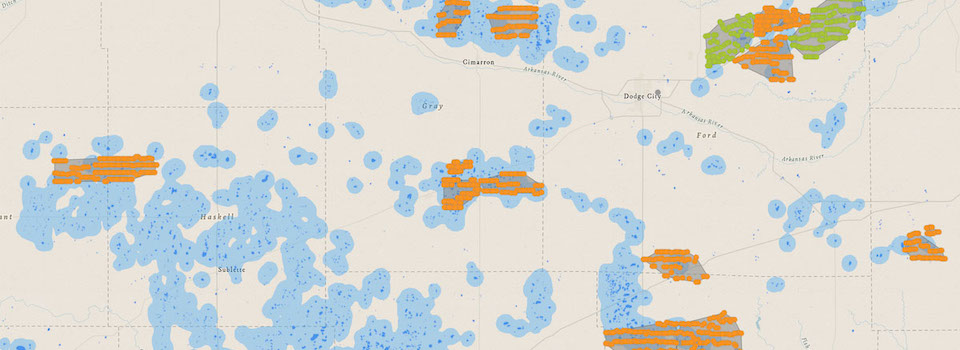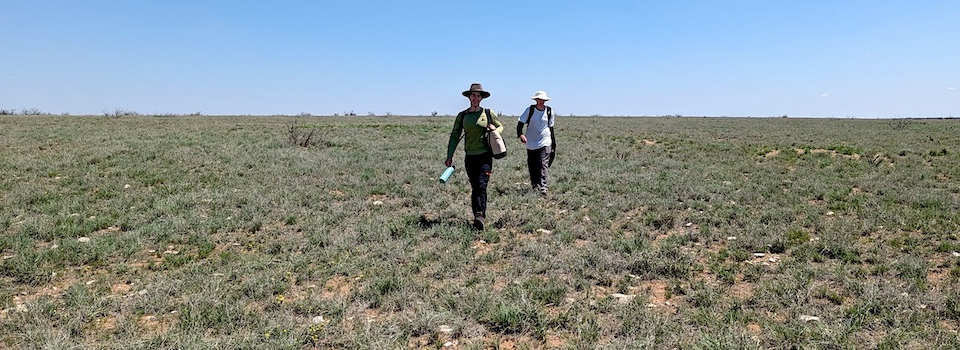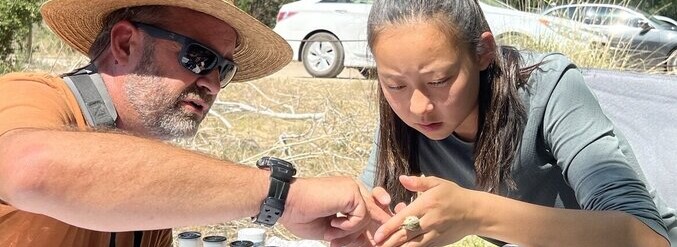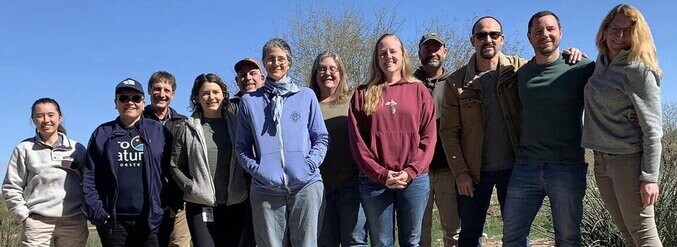Looking at an interactive playa map developed by Playa Lakes Joint Venture (PLJV), it’s easy to see how playas and renewable energy infrastructure are often found in the same locations — blue shapes marking playas and orange and green circles representing wind turbines often dot the same areas of the region. But why does this matter?
The western Great Plains will be increasingly relied on to provide renewable energy. In 2020, five of the six states in the PLJV region were in the top ten U.S. states for installing new wind energy capacity. Overall, four of the six states are in the top ten for cumulative installed capacity. Federal and state policies that focus on reducing reliance on fossil fuels will continue to accelerate this growth in the region.
The region is also densely populated with playas; and while benefits of playas are largely known, the impact of energy infrastructure on these important wetlands, and the wildlife that depend on them, is less understood. Because of this, PLJV endorses a precautionary approach to siting energy infrastructure around playas, especially clusters of playas.
The distribution of playas varies across the region; playas are sparsely distributed in some areas and clustered in others. To better understand potential impacts, PLJV tries to mimic how waterfowl view wetland habitat on the landscape.
Playas and Wildlife
Playa basins are lined with clay soil, which collects and holds water from rainfall and runoff, creating temporary lakes. Some dry up within days, while others contain water for weeks or months. Since playas go through wet and dry cycles, they can be almost unnoticeable on the landscape during a site review, presenting problems for developers after construction once water and birds show up. When wet, playas support a diversity of plants and wildlife, including resident and migratory birds.
Waterfowl, such as Northern Pintails, are more attracted to areas with a high density of playas. PLJV used data from a study in Colorado and Nebraska to identify and visualize how Northern Pintails see our landscape. The result is the playa clusters data layer.
Focusing on avoiding playa clusters is a key way to potentially avoid negative interactions with wetland birds since, to take advantage of a playa cluster, the birds must travel between playas.
Renewable Energy Guidelines
While much of the focus has been on siting wind turbines, solar energy development is beginning to attract more attention. Many PLJV partners are seeing an increase in solar farms in and around the PLJV region and expect the number of these projects to grow quickly over the next few years. In short, solar energy sites are likely to be a big player, and soon.
There are few published studies evaluating the effects of solar development on birds and other wildlife; therefore, given the scarcity of publicly available information, PLJV endorses a precautionary approach as best. PLJV is also in the process of updating the Renewable Energy Guidelines to include more detailed guidance around solar.
If you zoom in on a row of wind turbines on the playa map, it becomes clear just how complicated it can be to avoid playas and playa clusters in the renewable energy siting process, requiring multiple partners to come together to site energy infrastructure in ways that work for both industry and wildlife. This is particularly important as renewable energy — both wind and solar — continues to rapidly expand in the region.






